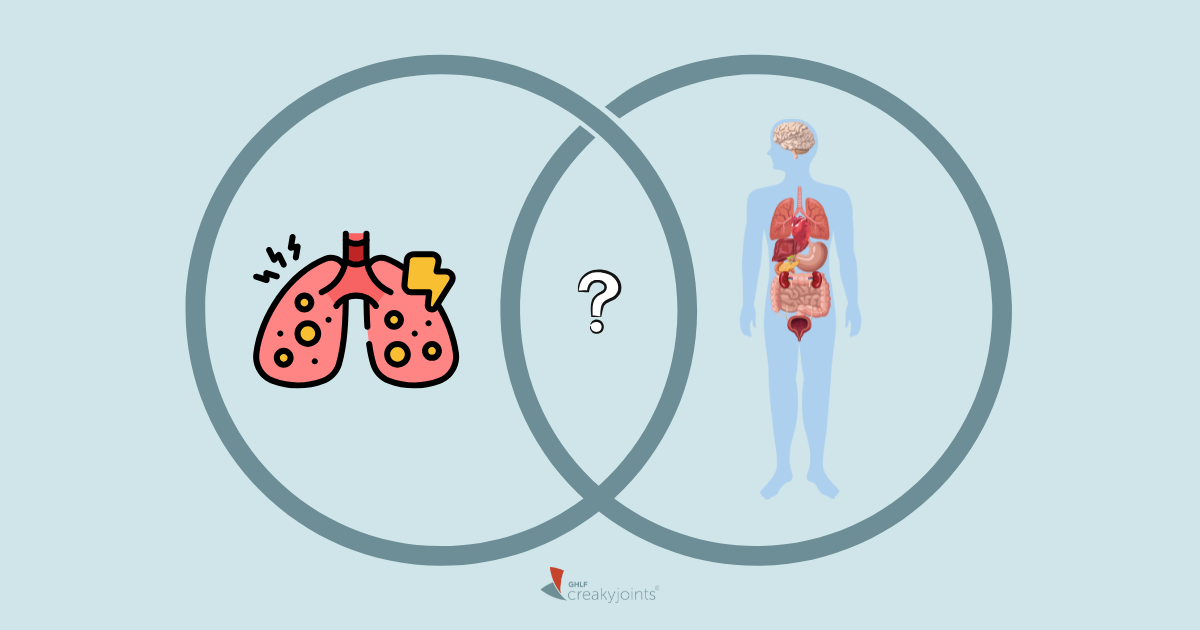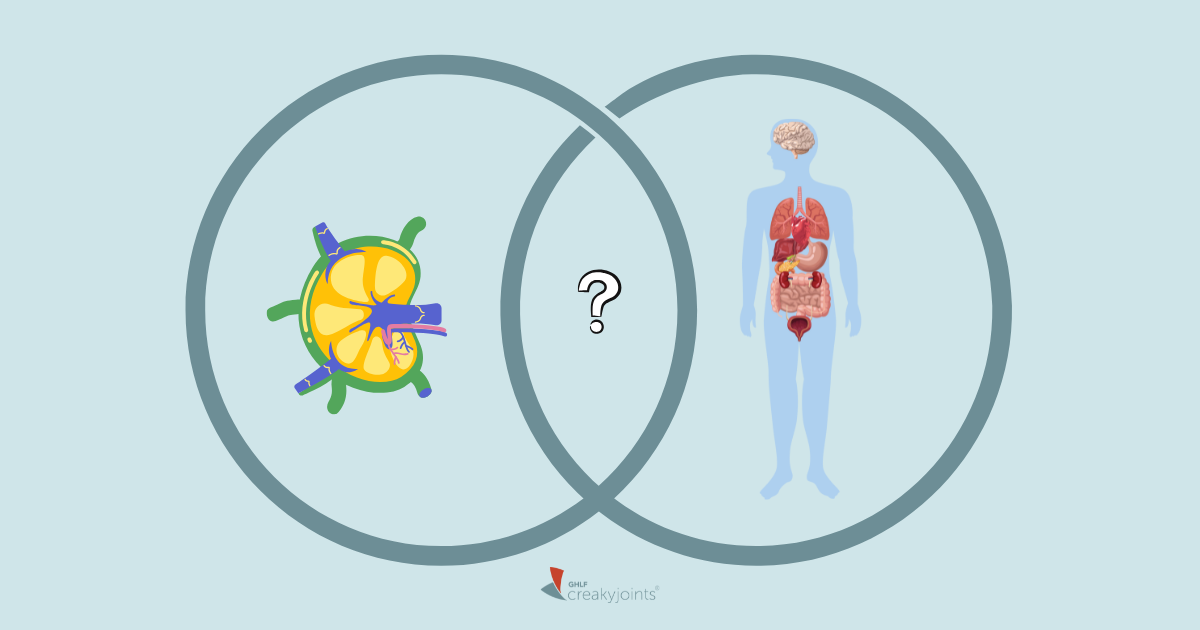

Gout isn’t a condition where you want to simply “wait and see how it goes.” Tracking key health metrics will help prevent severe bouts of pain and inflammation. On the other hand, ignoring them could do long-term damage to your body, even leading to kidney failure.
This type of inflammatory arthritis causes pain and swelling in the joints. With early diagnosis, treatment, and lifestyle changes, gout is one of the most controllable types of arthritis, per the National Institute of Arthritis and Musculoskeletal and Skin Diseases. The right management can help you prevent gout flares and can decrease symptom severity, or even become gout-free entirely.
“Think about gout as two diseases: the elevated blood level of uric acid that eventually leads to a build-up of crystals and the arthritis that’s caused by this build-up,” says Herbert S. B. Baraf, MD, Clinical Professor of Medicine at George Washington University and a Special Volunteer at the National Institute of Arthritis and Musculoskeletal and Skin Diseases.
Uric acid is produced when your body breaks down purines, naturally occurring substances. (High-purine foods like red meat and beverages like alcohol and sugary drinks can also promote higher levels of uric acid.) The pain caused by an accumulation of uric acid is usually the most severe the first four to 12 hours after it begins, per the Mayo Clinic.
“It’s as if you put a packet of sugar in a cup of iced tea — it will sweeten the tea, but also form crystals at the bottom of the glass because that iced tea can only hold so much sugar in solution,” says Dr. Baraf. “Likewise, patients who have elevated uric acid levels see uric acid crystals in the joints.”
When serum uric acid is elevated, it builds up in areas in your body that are cooler, undercirculated, or have a low pH. The big toe joint is a common victim of gout: The feet are five degrees cooler than your hips and shoulders, which are closer to your heart. It’s this accumulation of crystals formed by the saturation of uric acid serum that leads to gout attacks.
Without treatment, gout tends to progress, so it’s important to track your disease progression carefully. Here are the four health metrics you should discuss with your doctor if you have gout.
Blood Uric Acid Levels
This one may be most obvious: Since gout is caused by high uric acid levels in your blood, it’s important to test your uric acid levels regularly. “Regular monitoring of serum uric acid levels can gauge treatment effectiveness,” says Sean Ormond, MD, a pain management doctor dual board-certified in anesthesiology and interventional pain management.
Uric acid levels are typically measured by a blood or urine sample. A blood test is often done to diagnose gout, while a urine test can monitor the risk of developing kidney stones in people who have gout.
“The point at which the blood is supersaturated for uric acid is 6.8 mg per dL,” says Dr. Baraf. “Most guidelines for uncomplicated gout say that medications used to lower uric acid should bring the serum uric acid to a level of less than 6.0 — and for patients with more severe gout, below 5.0.”
In time, these deposits accumulate to the point that they’re visible as lumps, known as tophi. A patient who has multiple tophi is said to have tophaceous gout. If your uric acid level is above 6.8, the tophi will increase in size. If it is maintained at 6.8, they will stay about the same. But the lower you can get your uric acid on medication (say, if you get to 4 or 5), the more rapidly these deposits dissipate and disappear. Two common drugs used to treat uric acid are allopurinol and febuxostat.
“You should have your blood checked initially and then monthly until it’s clear the uric acid has achieved this target — and then two or three times a year to maintain that level,” says Dr. Baraf. “If medications are stopped, nothing has changed about your own metabolism, so the uric acid will go back up and crystals will deposit again. The medication is really for life.”
Pain Levels
As with any other disease, it can be helpful to keep a log of your symptoms and rate your pain during any given episode. This way, you can tell your doctor if your gout attacks are changing in frequency or severity. “Pain levels provide insights into the success of the current management strategy,” says Dr. Ormond.
Affected joints can experience not only intense pain, but also discoloration or redness, stiffness, swelling, tenderness, and warmth, per the Cleveland Clinic. Gout attacks happen very suddenly and often overnight.
Put a journal by your bed to track the frequency and severity of your pain. Be sure to note if and when any medication was changed or added — and share these notes with your doctor at your next appointment.
Kidney Function
A 2021 study in BMJ Open that looked at more than 620,000 patients in the United Kingdom found that gout more than doubled the likelihood of kidney failure. For that reason, it’s important to regularly monitor your kidney health with your doctor. “Regular testing can detect potential kidney issues early due to higher risk in gout patients,” says Dr. Ormond.
Uric acid is the connection between gout and kidney issues: As urate crystals pass through your kidneys, they can cause damage. Experts believe this damage leads to kidney disease and failure over time, especially if you don’t treat your gout.
Your doctor may recommend urine tests, blood tests, or even imaging to evaluate the health of your kidneys. For instance, a blood test can determine your glomerular filtration rate (GFR), a measure of how well your kidneys get rid of waste, toxins, and excess fluid from your blood, per the U.S. Centers for Disease Control and Prevention. A GFR number less than 60 may mean you have kidney disease.
As many as 70 percent of adults with gout have an estimated GFR of less than 60, and 20–24 percent have an estimated GFR of less than 30, per a 2021 study in Nature Reviews Rheumatology.
Heart Health Metrics
Gout is also commonly associated with diabetes, hypertension, heart disease, and high cholesterol. In fact, patients with gout had a 15 percent higher risk of dying of cardiovascular disease or having a heart attack or stroke than patients who never developed gout, per a 2018 study in the Journal of the American Heart Association.
It’s important to monitor heart health metrics like your blood sugar, blood pressure, cholesterol, blood glucose, and body mass index (BMI) with your doctor. “These things need to be checked — not so much to improve your gout, but to improve your overall health because these disorders are commonly seen together,” says Dr. Baraf.
Learn more about gout and heart disease risk.
Be a More Proactive Patient with PatientSpot
PatientSpot (formerly ArthritisPower) is a patient-led, patient-centered research registry for people living with chronic conditions. You can participate in voluntary research studies about your health conditions and use the app to track your symptoms, disease activity, and medications — and share with your doctor. Learn more and sign up here.
Gout. National Institute of Arthritis and Musculoskeletal and Skin Diseases. February 2020. https://www.niams.nih.gov/health-topics/gout.
Interview with Herbert S. B. Baraf, MD, Clinical Professor of Medicine at George Washington University and a Special Volunteer at the National Institute of Arthritis and Musculoskeletal and Skin Diseases
Gout. Mayo Clinic. November 16, 2022. https://www.mayoclinic.org/diseases-conditions/gout/symptoms-causes/syc-20372897.
Interview with Sean Ormond, MD, a pain management doctor dual board-certified in anesthesiology and interventional pain management
Gout. Cleveland Clinic. February 19, 2023. https://my.clevelandclinic.org/health/diseases/4755-gout.
Stack AG, et al. Gout and the risk of advanced chronic kidney disease in the UK health system: a national cohort study. BMJ Open. July 29, 2019. doi: http://dx.doi.org/10.1136/bmjopen-2019-031550.
Kidney Testing: Everything You Need to Know. U.S. Centers for Disease Control and Prevention. Accessed May 24, 2023. https://www.cdc.gov/kidneydisease/publications-resources/kidney-tests.html.
Stamp LK, et al. Management of gout in chronic kidney disease: a G-CAN Consensus Statement on the research priorities. Nature Reviews Rheumatology. July 30, 2021. doi: https://doi.org/10.1038/s41584-021-00657-4.
Pagidipati NJ, et al. Association of Gout With Long‐Term Cardiovascular Outcomes Among Patients With Obstructive Coronary Artery Disease. Journal of the American Heart Association. August 17, 2018. doi: https://doi.org/10.1161/JAHA.118.009328.





